tesla charging
Discussion
Anyone know about these?
Customer of mine is having one delivered sometime later this year and wants the highest capacity charge point, but trying to find out from tesla the circuit capacity and interface (socket) type I need to install to achieve this in readiness for delivery is like wrestling a greased haddock
Customer of mine is having one delivered sometime later this year and wants the highest capacity charge point, but trying to find out from tesla the circuit capacity and interface (socket) type I need to install to achieve this in readiness for delivery is like wrestling a greased haddock
Don't know but free home charge point here : http://www.britishgas.co.uk/products-and-services/...
The Tesla website suggests that the Wall connector will supply 80A at 240V?
That sounds like an awful lot to me, and they will need some big cable back to the dist board.
Sorry, should have added that it says the on-board charger can draw at up to 40A, so it's only 80A if he has specified the dual chargers.
That sounds like an awful lot to me, and they will need some big cable back to the dist board.
Sorry, should have added that it says the on-board charger can draw at up to 40A, so it's only 80A if he has specified the dual chargers.
You really need to know how many miles he needs from what charging time.
I guess three phase is out of the question for a standard home...unless he has a fairly large property and already has it?
That would leave the 32A supplies giving 22 miles/hr charge as the best option.
Drawing 32A might also take the mains incomer fuse close to its limit if they also have electric ovens and electric showers that could all be on too.
The adapter guide here gives the standard socket type for europe.
http://www.teslamotors.com/en_GB/charging#/outlet
I guess three phase is out of the question for a standard home...unless he has a fairly large property and already has it?
That would leave the 32A supplies giving 22 miles/hr charge as the best option.
Drawing 32A might also take the mains incomer fuse close to its limit if they also have electric ovens and electric showers that could all be on too.
The adapter guide here gives the standard socket type for europe.
http://www.teslamotors.com/en_GB/charging#/outlet
Edited by cootuk on Saturday 5th April 17:46
Tesla's biggest charger appears to be ~100 amps at 230 volts, but in my experience most residential properties only have a 100 amp main fuse so if he wanted to charge at that rate, he'll probably need a separate feed brought into the property for it?
I suppose it's going to come down to how much he's willing to spend, and how fast he really needs to charge it.
I suppose it's going to come down to how much he's willing to spend, and how fast he really needs to charge it.
Is this what you need?
VOLTS / AMPS KILOWATTS MILES OF RANGE PERHOUR OF CHARGE
Standard Outlet (Great Britain) 230 V / 13 A 3.0 kW 8
IEC 60309 Blue - Utility Adapter 230 V / 32 A 7.4 kW 22
IEC 60309 Red - Utility Adapter 400 V / 16 A 11 kW 34
IEC 62196 Type 2 230 V / 16 A 3.7 kW 11
IEC 62196 Type 2 230 V / 32 A 7.4 kW 22
IEC 62196 Type 2 400 V / 16 A 11 kW 34
IEC 62196 Type 2 400 V / 32 A 22 kW 68
Formatting hasn't works but you get the idea.
Note that the charging point needs to complete an "electronic handshake" before the car will charge, and not all charging points can do this. Tesla couldn't tell me which were suitable though.
I've been looking to get a Tesla compatible charging point installed at my office but the most cost effective and easiest solution has been to get a blue IEC 60309 socket (32A single phase giving 22 miles per hour of charge) put on the wall instead and the car comes with the right cable.
ETA: Also note that to use a Type 2 connection, your customer needs to have bought the type 2 connector wire from Tesla, which is an optional extra that costs £500, which is why I'm having an IEC60309 as the Tesla owner I'm dealing with didn't buy that connector.
VOLTS / AMPS KILOWATTS MILES OF RANGE PERHOUR OF CHARGE
Standard Outlet (Great Britain) 230 V / 13 A 3.0 kW 8
IEC 60309 Blue - Utility Adapter 230 V / 32 A 7.4 kW 22
IEC 60309 Red - Utility Adapter 400 V / 16 A 11 kW 34
IEC 62196 Type 2 230 V / 16 A 3.7 kW 11
IEC 62196 Type 2 230 V / 32 A 7.4 kW 22
IEC 62196 Type 2 400 V / 16 A 11 kW 34
IEC 62196 Type 2 400 V / 32 A 22 kW 68
Formatting hasn't works but you get the idea.
Note that the charging point needs to complete an "electronic handshake" before the car will charge, and not all charging points can do this. Tesla couldn't tell me which were suitable though.
I've been looking to get a Tesla compatible charging point installed at my office but the most cost effective and easiest solution has been to get a blue IEC 60309 socket (32A single phase giving 22 miles per hour of charge) put on the wall instead and the car comes with the right cable.
ETA: Also note that to use a Type 2 connection, your customer needs to have bought the type 2 connector wire from Tesla, which is an optional extra that costs £500, which is why I'm having an IEC60309 as the Tesla owner I'm dealing with didn't buy that connector.
Edited by southpaw on Saturday 5th April 20:24
hairyben said:
Anyone know about these?
Customer of mine is having one delivered sometime later this year and wants the highest capacity charge point, but trying to find out from tesla the circuit capacity and interface (socket) type I need to install to achieve this in readiness
I can help with this but its vital to find out the following :-Customer of mine is having one delivered sometime later this year and wants the highest capacity charge point, but trying to find out from tesla the circuit capacity and interface (socket) type I need to install to achieve this in readiness
(1) has he ordered a Model S with ONE or TWO on-board chargers ? (ie, these are built into the car)
(2) does his property have 3 phase into the building ?
hairyben said:
..
trying to find out from tesla the circuit capacity and interface (socket) type I need to install to achieve this in readiness for delivery is like wrestling a greased haddock
I cant say I've ever had any greasy haddock problems getting hold of anyone - they're normally very professional in an American kinda way.trying to find out from tesla the circuit capacity and interface (socket) type I need to install to achieve this in readiness for delivery is like wrestling a greased haddock
Carparticus said:
hairyben said:
Anyone know about these?
Customer of mine is having one delivered sometime later this year and wants the highest capacity charge point, but trying to find out from tesla the circuit capacity and interface (socket) type I need to install to achieve this in readiness
I can help with this but its vital to find out the following :-Customer of mine is having one delivered sometime later this year and wants the highest capacity charge point, but trying to find out from tesla the circuit capacity and interface (socket) type I need to install to achieve this in readiness
(1) has he ordered a Model S with ONE or TWO on-board chargers ? (ie, these are built into the car)
(2) does his property have 3 phase into the building ?
hairyben said:
Carparticus said:
hairyben said:
Anyone know about these?
Customer of mine is having one delivered sometime later this year and wants the highest capacity charge point, but trying to find out from tesla the circuit capacity and interface (socket) type I need to install to achieve this in readiness
I can help with this but its vital to find out the following :-Customer of mine is having one delivered sometime later this year and wants the highest capacity charge point, but trying to find out from tesla the circuit capacity and interface (socket) type I need to install to achieve this in readiness
(1) has he ordered a Model S with ONE or TWO on-board chargers ? (ie, these are built into the car)
(2) does his property have 3 phase into the building ?
Based on the fact your client has a Model S with two onboard chargers and has 400v 3 phase available, I've shown below the 3 main charge options possible, as well as info on faster charging away from home.
The Model S has a 7 pin Mennekes charge port, which can work with a number of different cables and adapters.
As standard, the Model S comes with a 'UMC' cable set with built in control signal generation. It simply links the car to a 13 amp domestic socket, or a 32 amp blue commando IEC 60309 socket for 7kw max. There is an optional red 3 phase adapter for use with the UMC.
Option 1
A normal 13amp mains socket can be used, but wire up a 32amp blue commando socket for 7kw, and link either to the car to the sockets using the UMC adapter that comes with the car. This will charge the Model S from empty, overnight.
Option 2
Wire up Red IEC 60309 wall socket or inline female socket for 3 phase 3P+N+E at 16amp 400v, giving 11kw. BUT .. you'll need the optional Red 16a 3ph adapter for the UMC cable set mentioned above.
Option 3
Buy a compatible 22kw 400v 3 phase EVSE wall charger, that generates the relevant control signals, and has a 7 pin Mennekes cable that plugs into the car.
The German EVSE manufacturer ABL-SURSUM has recently announced a 22kw "eMH1" wall mounted charger. These generate the control pilot / handshaking signals, and (I think) come with a 7 pin Mennekes cable that plugs into the Model S charge port, which then makes use of both the on board 11kw chargers.
There are other 22kw wall chargers for indoor / outdoor use, for around £800, but you'll need a 7 pin cable for another £200 eg :-
http://nuworldenergy.co.uk/shop.php#!/~/product/ca...
With any 22kw option, I guess you'll need to ensure the supply to the premises can handle the load in conjunction with other loading.
(Tesla EU will also eventually be supplying a branded wall charger, but no firm details are currently available...)
---
High power charging (away from home)
A 50Kw DC Chademo-Tesla adapter will be available shortly. This opens up fast DC charging at every motorway service station, as there are now 100's of free-use of Ecotricity charge points, and also at all IKEA's in the UK. These will top up a Model S at the approx rate of 150 miles per hour.
135 Kw DC Tesla Superchargers will also be installed along M4, M6, M1, M20, M25 within the next year. These charge at up to 150 miles in 20 minutes.
The combination of every motorway service station, plus all IKEA's, plus the Tesla Superchargers should mean the entire country is covered for > 50kw charging. And I mean Penzance to John O'Groats !
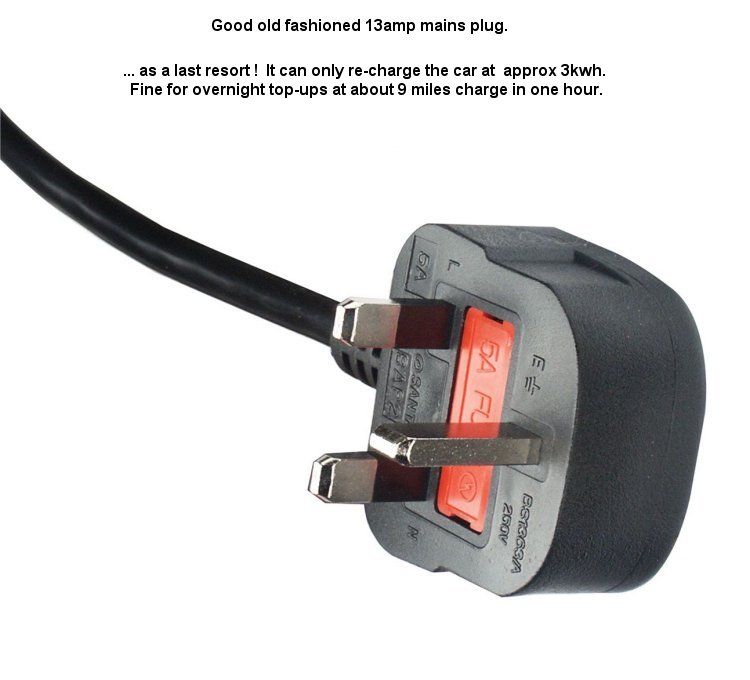

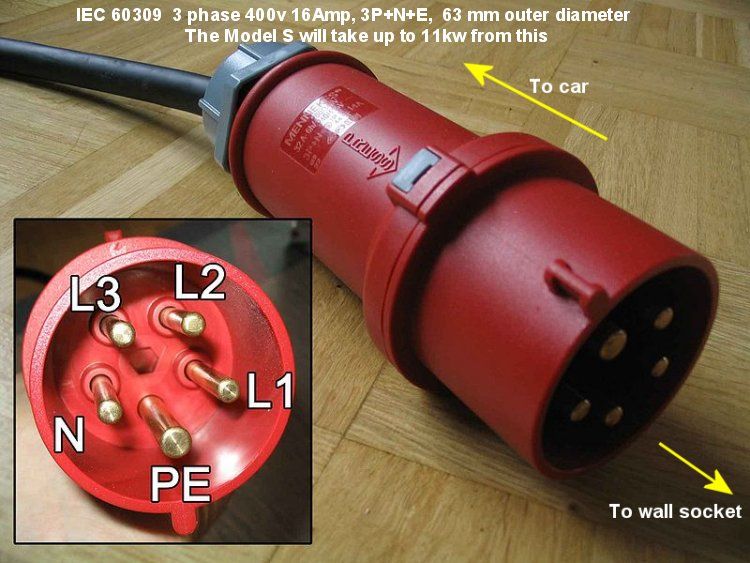
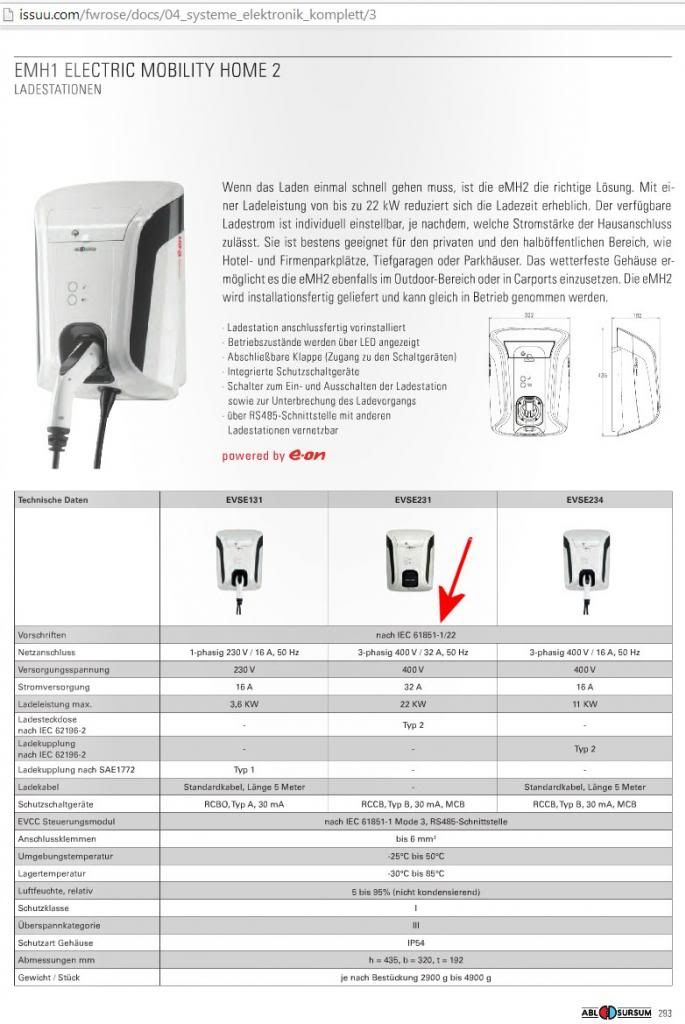
Forthcoming 50kw DC Chademo adapter :-

Tesla Superchargers (USA style) soon to be in the UK :-



Ecotricity UK chargers as found at all Motorway service stations, IKEA's, and other spots (see www.ecotricity.co.uk/for-the-road/our-electric-hig... )
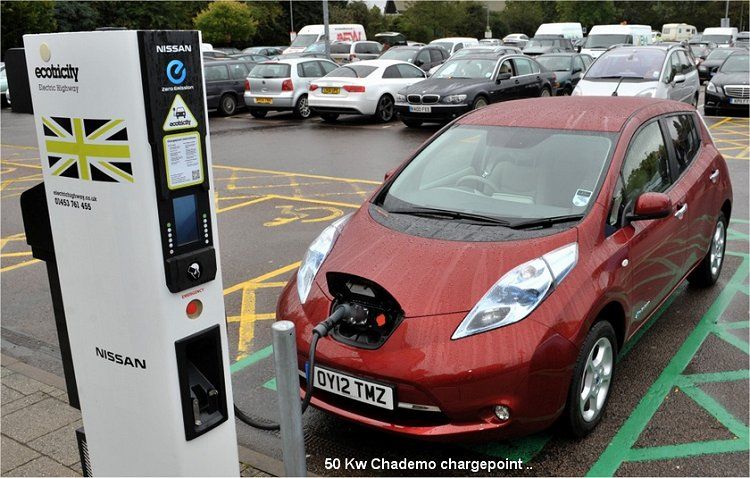
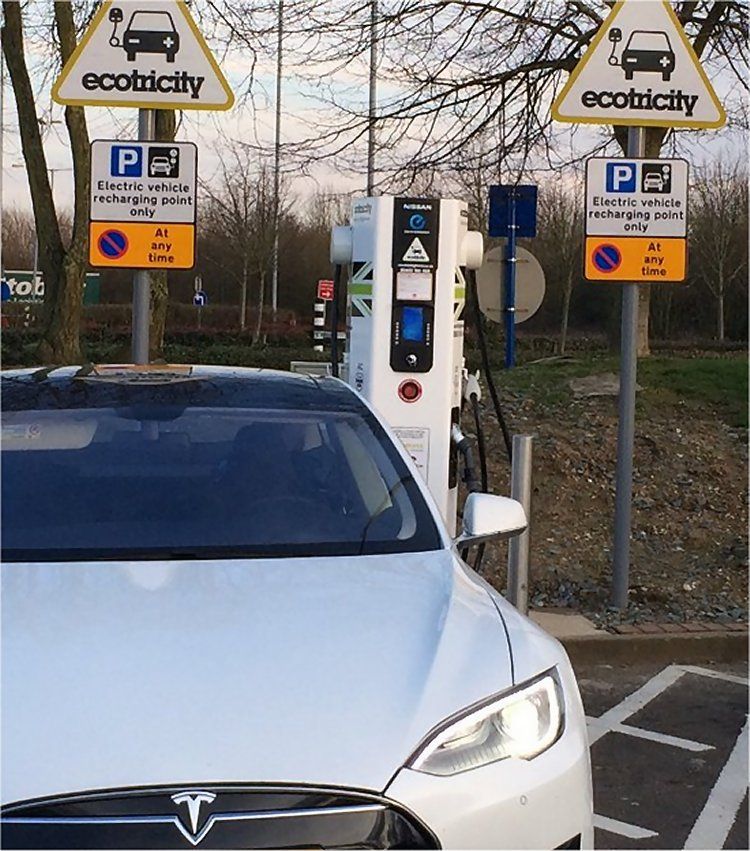
Edited by Carparticus on Tuesday 8th April 20:15
Carparticus said:
The German EVSE manufacturer ABL-SURSUM has recently announced a 22kw "eMH1" wall mounted charger. These generate the control pilot / handshaking signals, and (I think) come with a 7 pin Mennekes cable that plugs into the Model S charge port, which then makes use of both the on board 11kw chargers.
There are other 22kw wall chargers for indoor / outdoor use, for around £800, but you'll need a 7 pin cable for another £200 eg :-
http://nuworldenergy.co.uk/shop.php#!/~/product/ca...
That seems like a lot of money for a socket to plug your car into, what exactly does it do? I thought the car has on-board chargers, it just needs a supply? Not criticizing so much as trying to understand.There are other 22kw wall chargers for indoor / outdoor use, for around £800, but you'll need a 7 pin cable for another £200 eg :-
http://nuworldenergy.co.uk/shop.php#!/~/product/ca...
Client has been offered a "free charger install" by british gas but this didn't include the cable run, and I doubt it's for something like this, more probably a basic/slower charger.
Excellent advice. If I had 3 phase at home, I'd bite the bullet and spend £1,000 on option 3. Permanent, flexible and includes the cable (you want the other charging cables with adaptors in your car - having to unplug and put it in the boot every time is a pain). The savings on fuel from home charging soon pay for the installation.
hairyben said:
Client has been offered a "free charger install" by british gas but this didn't include the cable run, and I doubt it's for something like this, more probably a basic/slower charger.
You're right - its nothing more than a 7kw live socket in a nice plastic housing with a British Gas logo on it and a decent plug n cable. Nice if its free (for the time being ..) but its only 7kw. For EVs with 25kwh battery pack size, this is fine as its a 3-4hr recharge worst case, which will suit most people. But when a pack is 85kwh you're looking at 12-13hrs. And bigger capacity battery packs might become available in due course, and 7kw wont really do it. However, unless the user really is doing 250-300 miles a day, then a home charger is only going to be topping the 'tank' up every night rather than constantly doing a total recharge.hairyben said:
That seems like a lot of money for a socket to plug your car into, what exactly does it do? I thought the car has on-board chargers, it just needs a supply? Not criticizing so much as trying to understand.
A 13amp socket or Blue 32amp commando or the Red 3phase female sockets are all 'dumb' electrical outlets. IE, they are 'live' and have no electronics. They can all plug into the UMC adapter that comes with the car. This UMC generates various 'control pilot' signals that talk to the cars' on-board chargers to check before any power is drawn by the car.
However, the wall mounted chargers are usually higher power direct into the car without any adapters and they have sockets which are not initially live. The wall chargers contain their own control-pilot signal generation electronics to hand-shake with the car. Once the wall charger and car are happy, the power to the outlet socket is enabled, often via an internal contactor which makes an audible 'clack'.
I know you said your client wants maximum charge rate whilst at home, but if he wants to save £1k on the 22kw wall charger, then the simple solution is to just fit a dumb Red 60309 3 phase 400v 16amp socket, and buy the optional Red adapter into the UMC, and charge the car at 11kw max.
If the battery was near empty, then a full recharge at 11kw will take about 8 hours, i.e. overnight. But in my experience its rare to have to do a full charge every day as that implies the car has done 250 miles PER DAY. Generally you get home having done 50/100 miles, plug it in and go indoors. The car tops up as needed for an hour or two, usually starting at a specified time to take advantage of economy 7 rates etc.
CHARGING STANDARDS AND PROTOCOLS
At the moment there are way to many different EV charging protocols. They get defined as Power Level 1/2/3, Communication Mode 1/2/3, socket types 1/2/3, with numerous different plugs like J1772, and Mennekes 7 pin and variations in between. Basically, its a mess.
The electronics in chargers and the cars need to determine things like "is the cable locked in or not"; is the current capacity of the cable good enough to avoid overheating; voltage stability; any leakage current for sockets soaked in rain etc. All this happens before the car draws from the external source. The 'pilot signal' usually consists of a 1khz square wave with variable pulse width to signify the current available, and the signal amplitude varies from 12v down to 3v to indicate status of the cable / plugs / charging status.
The Tesla Superchargers are of a proprietary design and capable of supplying a massive 135 Kw DC via a pretty damn thick cable, but only once the car and charger have ensured that a proper hook up is present. There's nothing else even close to this level of power at present, with CHADEMO next down the list at 50kw. These things supply power at 400 volts DC and 325 amps.... You don't want to try and whip a cable out and test it on your tongue like a 9v battery ;-) That's more power than used by a full sized floodlight column on a premier league football pitch!!
Some blurb on Control Pilot and Proximity Logic can be read up here :-
https://code.google.com/p/open-evse/wiki/J1772Basi...
http://en.wikipedia.org/wiki/SAE_J1772
Good summary of all the levels / modes / types :-
http://therevproject.com/doc/2012-EVcharging-s.pdf
Edited by Carparticus on Thursday 10th April 00:40
Some very interesting info here - thanks to those who have done the research.
Some of the power figures, esp the Superchargers, are pretty hefty. That makes me wonder what capacity is available at a motorway service station? All the other loads must be pretty minor - aircon and cookers are probably the biggest users.
So how many Superchargers will they be able to accommodate without upgrading the mains supply?
It looks as if some massive upgrades of our electricity infrastructure will be needed if there is any significant take-up of EVs.
Some of the power figures, esp the Superchargers, are pretty hefty. That makes me wonder what capacity is available at a motorway service station? All the other loads must be pretty minor - aircon and cookers are probably the biggest users.
So how many Superchargers will they be able to accommodate without upgrading the mains supply?
It looks as if some massive upgrades of our electricity infrastructure will be needed if there is any significant take-up of EVs.
This https://www.gov.uk/government/publications/ultra-l... from here https://www.gov.uk/government/organisations/office...
I was chatting to someone at a new Motorway Service area last month and they had to 'knock' the whole site out eleccy wise to do some work on the EV chargers, I was surprised they weren't on an isolator or something to minimise the impact.
I mentioned it on another thread and the 'new' thinking/testing is on 'inductive' charging whilst driving along/parked up,
The chap mentioned in the article below was in a meeting recently discussing the innovation etc
http://xtra.ciht.org.uk/en/media-centre/news.cfm/H...
I was chatting to someone at a new Motorway Service area last month and they had to 'knock' the whole site out eleccy wise to do some work on the EV chargers, I was surprised they weren't on an isolator or something to minimise the impact.
I mentioned it on another thread and the 'new' thinking/testing is on 'inductive' charging whilst driving along/parked up,
The chap mentioned in the article below was in a meeting recently discussing the innovation etc
http://xtra.ciht.org.uk/en/media-centre/news.cfm/H...
Edited by anonymous-user on Sunday 8th June 22:55
Gassing Station | EV and Alternative Fuels | Top of Page | What's New | My Stuff



